
RSPH Diploma Course
in Anatomical Pathology Technology
Work Based (Objective) Evidence examples
Specialist practical mortuary skills
Example 1: PM documentation - This evidence piece demonstrates the difference between adult and paediatric weighing sheets employed locally. The candidate has highlighted the differences by annotating the forms and also providing further context to why there is a need for the two forms.
Notes:
-
If candidates have limited experience within their mortuaries for Paediatric / Peri-natal PM then it would be beneficial if they observe them at another mortuary / facility and then reflect on the experience (or obtain a witness statement).
-
Alternatively, candidates may wish to discuss some of the documentation (e.g. placental examination, other data recorded) during the Paediatric / Peri-natal PM - see LO 2 link within unit 4.4 for access to some of this documentation.
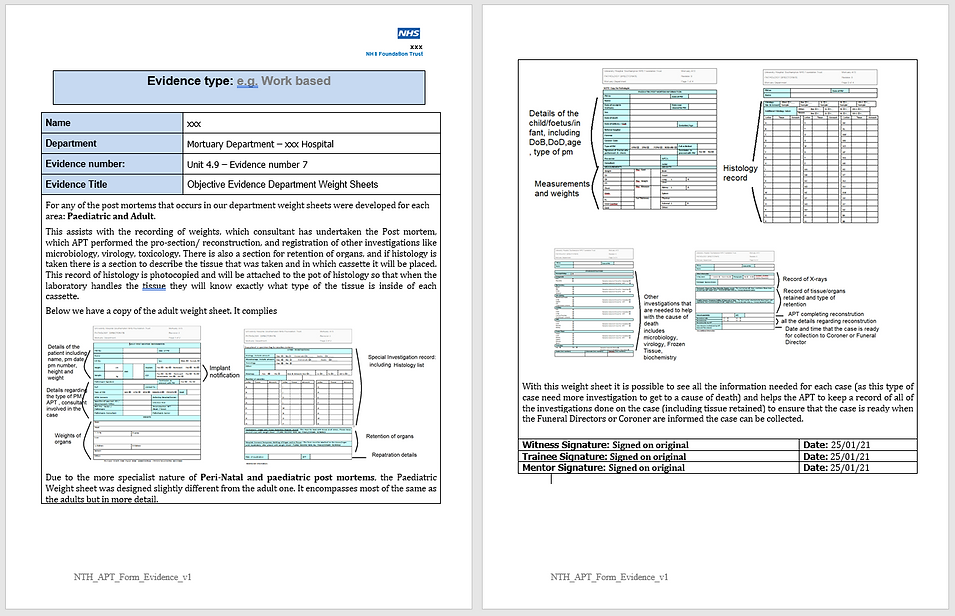
Example 2: Certificate of training attended - other training attended during the course can also be used a portfolio evidence. In this piece the candidate attended specialist eye [Cornea] donation training at another organisation and included a copy of the course certificate. The candidate put this training into context (i.e. explained what is was and why they went on it) and briefly discussed some of the course content.
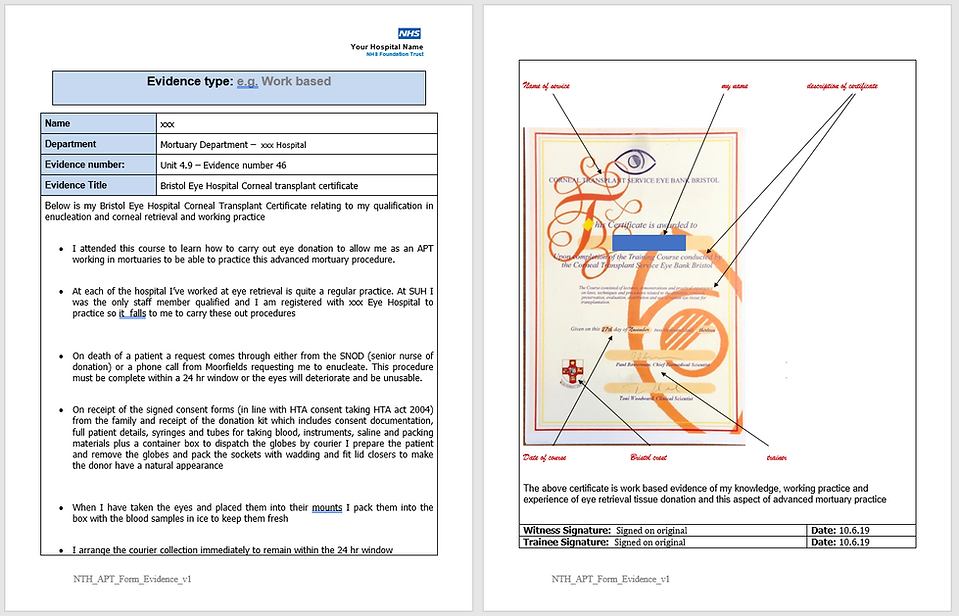
Example 3: High risk [infection] PM protocols - This evidence piece shows an page extracted form the relevant SOP for procedures for high risk PM's supplemented by photos demonstrating the additional H&S and infection control measure required. Candidate has explained relevant key points (H&S, samples, equipment and reagents) taken form the SOP. If using an SOP for evidence it is best to take copies of either the front page, index page or specific relevant section within the SOP.
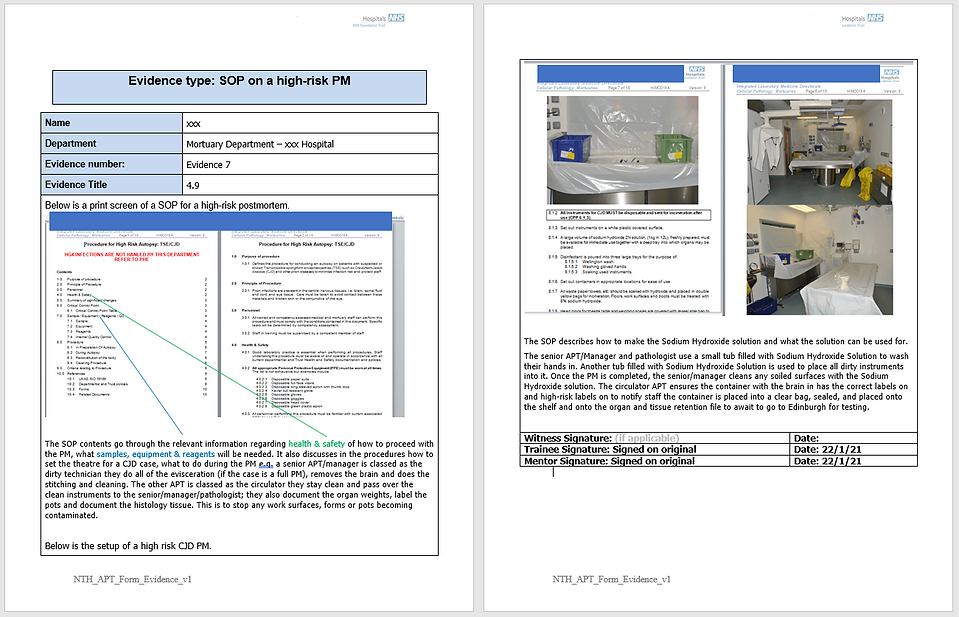
Example 4: Forensic case information booklet - the candidate has in the first paragraph provided the assessor with some context to the evidence piece (by explaining what is being shown and why). Example pages from the booklet have been included that the candidate has then annotated. The candidate has also given each image a short descriptive caption (red text) to further help identify each.
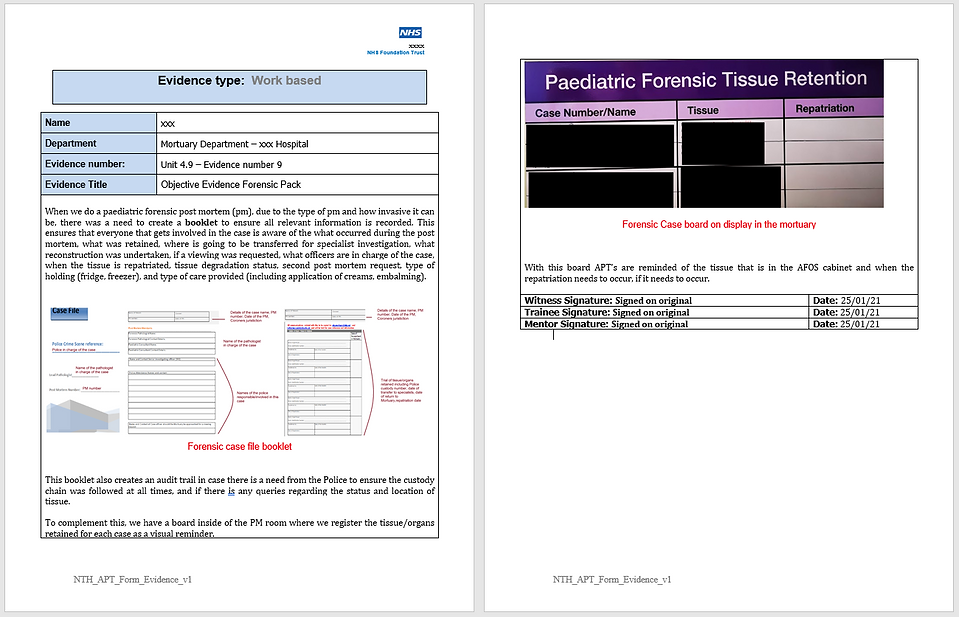
Example 5: Long bone removal and reconstruction - here the candidate has described the practical method for the removal of a femur with reference to the relevant SOP. The candidate has used personal experience and broken down the process into a number of key stages and then supplemented it with photographs taken of the final 'result'.
Notes:
-
If candidates do not perform certain specialist PM procedures within their mortuary it would be beneficial if they observe them at another mortuary and then reflect on the experience.
-
Alternatively candidates may wish to have a professional discussion with a pathologist about such procedures and then write a written statement on what they have learnt - they are to state in the write-up that this procedure is not carried out at their mortuary and beyond its scope of practice.

Example 6: Equipment used for forensic PM - although a simple piece of evidence it could be linked to a number of learning outcomes for this unit - short descriptions for each and how these items are used (relating to the specialist PM) would demonstrate understanding. Candidates could use this approach for other procedures (e.g. equipment and consumables used for reconstruction).
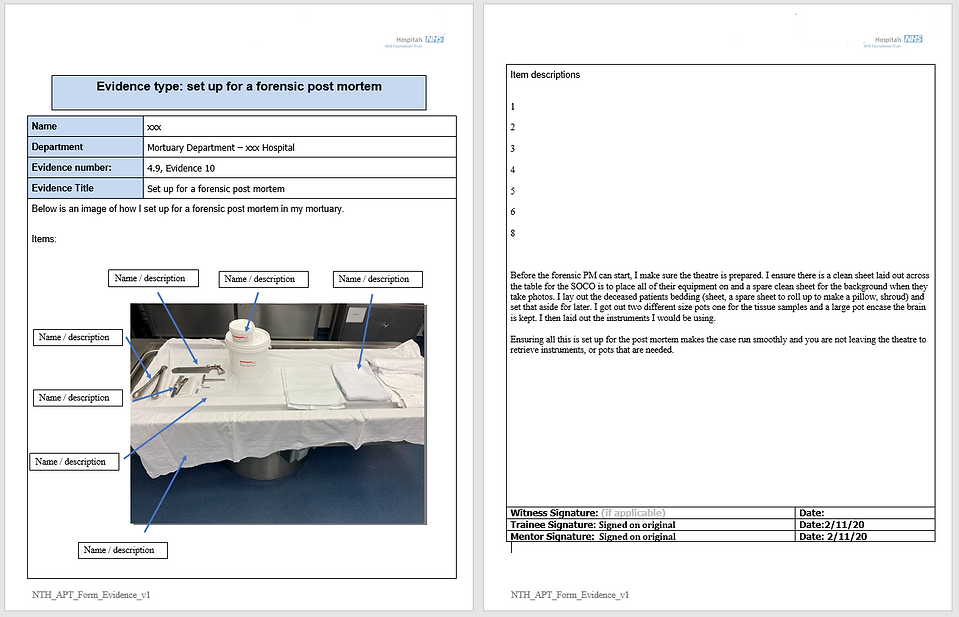
Example 7: SOP for brain donation - here the candidate has linked this evidence piece to a number of the ' Neuropathological' learning objectives of this unit - the SOP is augmented by supporting documentation used before the brain is removed.
Notes:
-
If candidates have limited experience within their mortuaries for the donation / tissue retrieval practical elements then it would be beneficial if they observe them at another mortuary / facility and then reflect on the experience (or obtain a witness statement).
-
Alternatively, candidates may wish to discuss some of the documentation and testing elements before tissue retrieval can take place - see LO 3 link within unit 4.4 for access to some of this documentation.
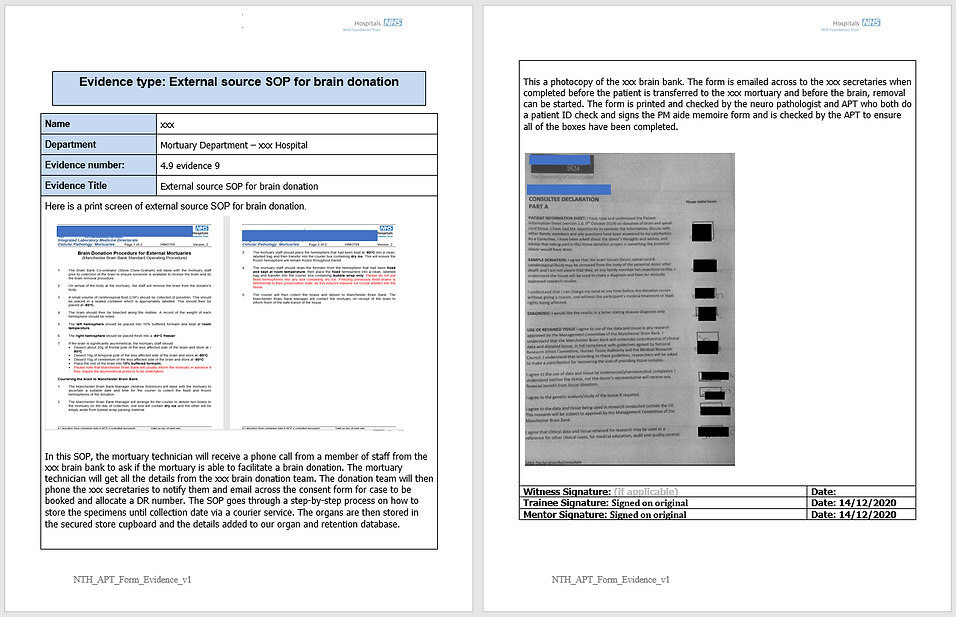
Page last updated: 28/04/21